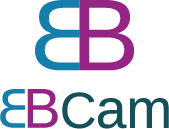The new tax year which started on 6 April brings a range of changes that could affect your financial planning.
Many allowances and tax bands have been frozen once again, with the personal allowance, basic-rate tax band, higher-rate tax band and additional rate thresholds remaining the same as last year. However, not all elements of the tax system are frozen:
- The dividend allowance has halved again, to just £500 per individual per annum, a tenth of the level at which it was introduced in 2016/17.
- The capital gains tax (CGT) annual exemption has also halved, to £3,000 per individual per tax year. This is the same level as it was at in 1981/82.
- If you are self-employed, you will now pay income tax on the profits you make in the tax year, rather than across your financial year. You may also be paying an element of extra income tax because of the spreading of profits in the 2023/24 transitional year.
- The pensions Lifetime Allowance (previously £1,073,100 if no pension protection is in place) has been abolished. However, this will be replaced by two new allowances; the lump sum allowance and the lump sum death benefit allowance.
Tax planning is often focused on the end of the tax year however, there is a case to be made for ‘year beginning planning’. For example, you may be able to save tax over the year by rearranging ownership of investments with your spouse or civil partner in April. Similarly, if you use your ISA allowance at the start of a tax year, the growth seen over that tax year will be tax-free (compared to potentially taxable if held within a General Investment Account pending investment into the ISA later in the year).
Let’s take a look at the financial planning points of the new tax year in more detail…
Review your finances
Start by going back to basics. With the cost of living crisis that we have faced over the past 12-18 months, reviewing and reducing your outgoings, setting a budget, or revisiting your longer-term goals to see if these are still achievable is a good place to start. Before you look at wider savings and investments, make sure that the base level of your financial plan has a sound footing.
When revisiting your goals, consider whether you are on track to meet these, or whether you may need to adjust them. Have you already achieved some of your goals? Has your family/household situation changed? As you go through life, your personal and financial circumstances will constantly evolve, and it’s important to review your goals as you navigate these changes.
Pension Allowances
Adding money to your pension helps you save for retirement and can also reduce the amount of income tax you have to pay. This can be particularly useful if you are on the cusp of paying a higher rate of income tax.
If you are a UK resident, under the age of 75, the general rule is you can contribute as much as you earn to pensions each tax year and receive tax relief. This is usually capped at £60,000 however, you may be able to take advantage of unused allowances from previous tax years to contribute more than this (known as the carry forward rule). For high-earners, where total income from all sources is above £260,000, a calculation will need to be completed to determine whether you are subject to a Tapered Annual Allowance, a restriction on the amount that could be paid into a pension scheme with tax relief. The minimum that the annual allowance can taper down is £10,000.
Whilst the Lifetime Allowance has been abolished from this tax year, it’s important to take time to understand the two new allowances that have been introduced:
- The Lump Sum Allowance (LSA): this is a cap on the amount of tax-free cash that can be drawn from your pension schemes during your lifetime. From 6 April 2024, the standard LSA is £268,275. Typically, you are able to draw up to 25% of your pension scheme as a tax-free lump sum, up to the LSA.
- The Lump Sum Death Benefit Allowance (LSDBA): this is the maximum amount of lump sums that can normally be paid to you during your lifetime and also covers lump sum payments when you die, or if you are suffering from a terminal illness. The standard LSDBA is £1,073,100.
These new allowances are somewhat complex and if you are concerned about whether these will impact you and your longer-term financial plans, please get in touch to discuss this.
It is however important to remember that money in a pension cannot normally be withdrawn until you are 55 (57 from 2028).
ISA allowances
ISAs are a great addition to any financial plan; whilst there is no tax relief up front, once invested, there is no UK income tax or capital gains tax, and you don’t need to complete a tax return to declare your investment. Junior ISAs, available to those aged under 18, are a great way to help give children a financial head start. The ISA and Junior ISA allowances remain unchanged at £20,000 and £9,000 respectively.
If you are aged between 18-39, you are also eligible for a Lifetime ISA (LISA). LISAs allow you to save up to £4,000 per tax year until you are 50, with the government adding a 25% bonus of the amount paid in (so, if you make the maximum £4,000 contribution, you will receive the maximum £1,000 government bonus). LISAs offer savings for two very specific events; the purchase of your first home or your retirement (after age 60). You are able to access funds within a LISA at any time however, if you access for any other reason than the two mentioned here, the withdrawal will be subject to a 25% tax charge.
If you invest in a LISA, the amount you can contribute to a traditional ISA is reduced by the amount that you contribute to the LISA (so, if you contribute the full £4,000 to the LISA, you are able to contribute up to £16,000 into a traditional ISA).
It makes sense to use your ISA allowance as soon as possible in the tax year; the sooner money is invested into an ISA, the more quickly it gains the tax advantages described above. It also means it has more time to grow tax-efficiently.
If you would like to review your financial plan with one of our financial planners, please get in touch today via financialplanning@ebcam.co.uk.

